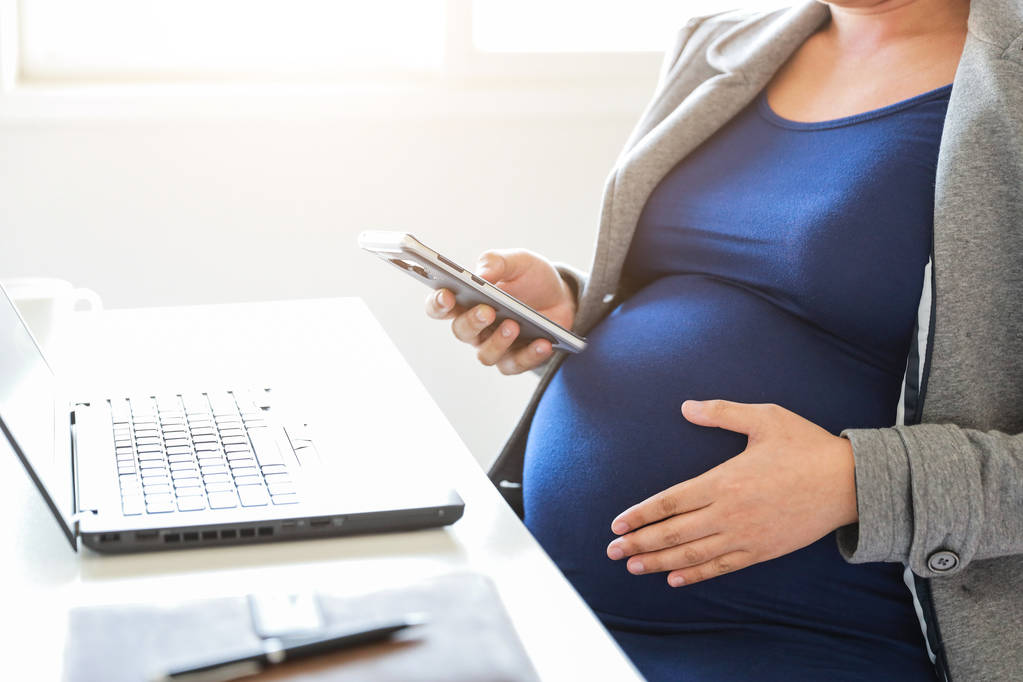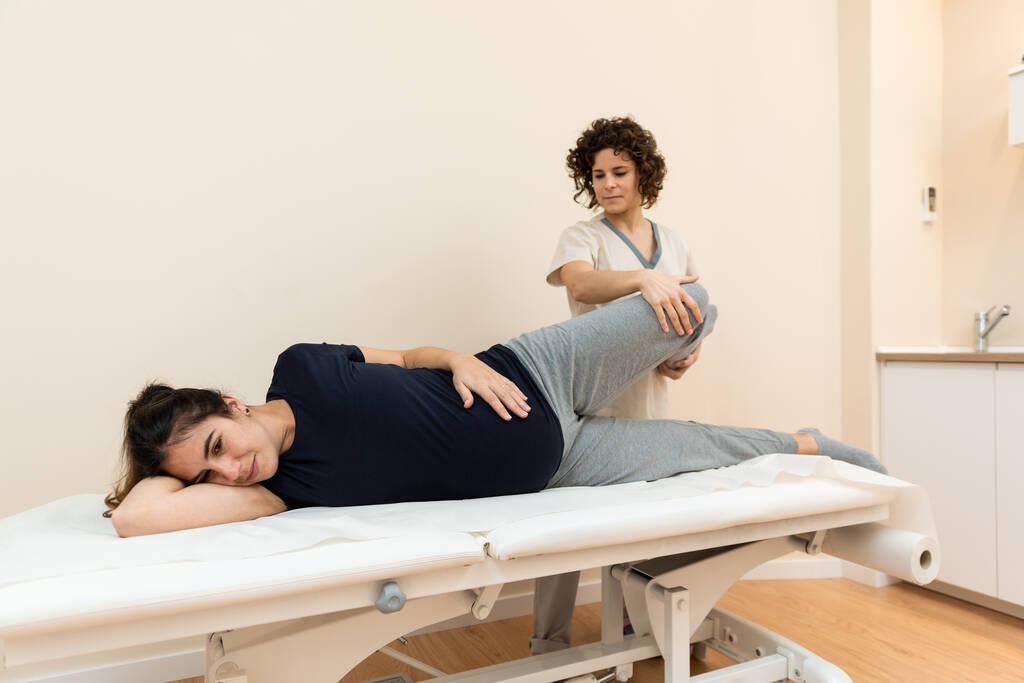Discover the potential posture-related concerns that working pregnant women may face and learn practical tips to maintain a healthy posture throughout pregnancy.
Are There Posture-Related Concerns for Working Pregnant Women?
As the saying goes, “mother knows best.” And when it comes to pregnancy, there are plenty of things moms-to-be become experts on. From monitoring their diet to taking care of their mental health, pregnant women are dedicated to ensuring a safe and healthy journey for themselves and their little ones. But have you ever stopped to consider the impact pregnancy has on posture? It turns out that those baby bumps can bring about some serious concerns when it comes to the way pregnant women carry themselves. Let’s dive into the world of pregnancy and posture to better understand the challenges faced by working women.

Understanding Pregnancy and Posture
Your body goes through some incredible changes during pregnancy. While these changes are all part of the miracle of life, they can also wreak havoc on your posture. As your baby grows, your center of gravity shifts forward, putting additional strain on your back and pelvis. The added weight can throw off the alignment of your spine, leading to discomfort and even pain. But it’s not just the growing bundle of joy causing these postural concerns – your hormones also play a role. The body produces a hormone called relaxin during pregnancy, which softens the ligaments in your pelvis. While this is necessary for childbirth, it can result in instability and further contribute to poor posture.
The Impact of Pregnancy on Posture
The physical changes brought about by pregnancy can have a significant impact on your posture. As your belly expands, your lower back tends to curve more than usual, leading to a swayback posture. This exaggerated curve can strain the muscles in your lower back and increase your risk of developing back pain. Additionally, the changing alignment of your spine can affect the way you walk and stand, further aggravating any existing postural issues.
During pregnancy, your body undergoes a remarkable transformation to accommodate the growing life inside you. The expanding uterus pushes your abdominal organs upward, causing your diaphragm to rise. This upward pressure can compress your lungs, making it harder to take deep breaths and affecting your posture. You may find yourself hunching forward slightly to alleviate this discomfort, which can lead to rounded shoulders and a forward head posture.
Another factor that can impact your posture during pregnancy is the increased size and weight of your breasts. As your breasts grow in preparation for breastfeeding, they can pull your shoulders forward and strain the muscles in your upper back. This can contribute to a rounded upper back posture, commonly known as “mommy posture.”
How Work Environment Affects Posture During Pregnancy
For many women, pregnancy coincides with continued work responsibilities. Whether you’re sitting at a desk or on your feet all day, your work environment can have a profound effect on your posture during pregnancy. Sitting for long periods without proper support can exacerbate postural issues, especially if your chair and desk are not ergonomically designed. On the other hand, jobs that require prolonged standing or heavy lifting can put excessive strain on your back and pelvis, leading to discomfort and fatigue. It’s crucial to be mindful of your work environment and make necessary adjustments to support your changing body.
If you have a desk job, consider using an adjustable chair that provides lumbar support and promotes good posture. Position your computer monitor at eye level to prevent straining your neck and make sure your keyboard and mouse are within easy reach. Taking regular breaks to stretch and move around can also help alleviate any muscle tension and improve circulation.
For those in jobs that involve standing for long periods, it’s important to take frequent breaks to rest and shift your weight. Wearing supportive shoes with cushioning and arch support can help reduce the strain on your feet and lower back. If you need to lift heavy objects, remember to engage your core muscles and use proper lifting techniques to minimize the risk of injury.
Regardless of your work environment, incorporating exercises and stretches specifically tailored for pregnant women can help improve your posture and alleviate discomfort. Prenatal yoga and Pilates classes can be beneficial in strengthening your core muscles and promoting better alignment. Consulting with a physical therapist or a prenatal fitness specialist can provide you with personalized guidance and exercises that are safe for you and your baby.
Common Posture-Related Concerns for Pregnant Women
Having a baby is a joyous time, but it does come with its fair share of aches and pains. When it comes to posture-related concerns, two issues often top the list: back pain and pelvic pain.
Back Pain and Pregnancy
Back pain is a common complaint among pregnant women. The extra weight and shifted center of gravity can strain the muscles and ligaments in your back, leading to discomfort. Hormonal changes and increased pressure on the nerves in your spine can also contribute to back pain during pregnancy. It’s essential to take measures to alleviate this discomfort to ensure a more pleasant pregnancy experience.
One way to relieve back pain during pregnancy is through regular exercise. Engaging in low-impact activities like swimming, prenatal yoga, or walking can help strengthen the muscles that support your back and improve overall posture. Additionally, practicing proper body mechanics, such as lifting heavy objects with your legs instead of your back, can reduce the strain on your spine.
Another effective method for managing back pain is using supportive devices. Maternity belts or belly bands can provide extra support to your abdomen, relieving pressure on your back. These devices are designed to distribute the weight of your growing belly more evenly and promote better posture.
Furthermore, maintaining good posture throughout the day can significantly reduce back pain. Avoid slouching or hunching over and instead, try to sit and stand up straight. Using a chair with proper lumbar support can also help alleviate back discomfort.
Pelvic Pain and Pregnancy
Pelvic pain, also known as symphysis pubis dysfunction (SPD) or pelvic girdle pain (PGP), is another concern for expectant mothers. As the ligaments in your pelvis loosen, it can lead to instability and pain in the pelvic region. This can make everyday activities like walking, standing, or even rolling over in bed uncomfortable. Special care must be taken to manage and alleviate pelvic pain to ensure a smoother pregnancy journey.
One effective way to manage pelvic pain is through physical therapy. A trained therapist can provide exercises and stretches that target the muscles around the pelvis, helping to stabilize and support the area. They can also teach you proper body mechanics and techniques for relieving pain during daily activities.
Using supportive devices, such as a pelvic support belt, can also provide relief from pelvic pain. These belts are designed to provide compression and stability to the pelvis, reducing discomfort and promoting better posture. It’s important to consult with your healthcare provider or a physical therapist to ensure you choose the right type and size of support belt for your specific needs.
In addition to these measures, practicing good body mechanics is crucial in managing pelvic pain. Avoid activities that exacerbate the pain, such as lifting heavy objects or standing for prolonged periods. Instead, focus on maintaining proper alignment and using your body’s natural movements to minimize strain on the pelvis.
Lastly, finding comfortable positions for rest and sleep can greatly alleviate pelvic pain. Experiment with different pillows and cushions to support your body and relieve pressure on the pelvis. Sleeping on your side with a pillow between your legs can help align your hips and reduce discomfort.
The Role of Ergonomics in Pregnancy
When it comes to finding solutions for posture-related concerns during pregnancy, ergonomics is the name of the game. Making adjustments to your workspace and daily routine can make a world of difference in improving your posture and reducing discomfort.
Importance of Ergonomic Furniture for Pregnant Women
Investing in ergonomic furniture is a wise choice for pregnant women. A chair with proper lumbar support and adjustability can help maintain good posture while sitting for extended periods. Similarly, an ergonomic desk that allows you to adjust the height can ensure your wrists and arms are in a comfortable position. These small changes can make a big impact on your overall well-being throughout pregnancy.
Ergonomic Practices to Improve Posture
Beyond furniture, incorporating ergonomic practices into your daily routine can help improve your posture during pregnancy. Remember to take regular breaks to stretch and move around, especially if your job requires sitting for most of the day. Using a footrest or cushion to support your feet can also alleviate pressure on your lower back. And don’t forget the importance of maintaining proper posture while standing and walking. Engage your core muscles, keep your shoulders relaxed, and distribute your weight evenly to reduce strain on your back and pelvis.
Tips for Maintaining Good Posture During Pregnancy
Alongside ergonomic considerations, there are several other tips and tricks that can help you maintain good posture throughout your pregnancy.
Posture Correction Techniques for Pregnant Women
Practice good posture by sitting and standing tall. Imagine a string pulling the crown of your head upward, aligning your spine in a neutral position. Keep your shoulders relaxed and avoid slumping or straining forward. When sitting, ensure your feet are flat on the floor, and use a cushion or lumbar roll behind your lower back for added support. These small adjustments can have a big impact on your posture and help alleviate discomfort.
Exercises to Improve Posture During Pregnancy
Staying active is an essential part of maintaining good posture during pregnancy. Gentle exercises that focus on strengthening your core, back, and pelvic muscles can go a long way in supporting your changing body. Engaging in activities such as prenatal yoga, swimming, or walking can help improve your posture and overall well-being. However, it’s crucial to consult with your healthcare provider before starting any exercise regimen to ensure it’s safe for you and your baby.
Seeking Professional Help for Posture-Related Concerns
While taking proactive measures to improve your posture during pregnancy is important, there may come a time when seeking professional help becomes necessary.

When to Consult a Doctor
If you’re experiencing severe or persistent pain, or if your postural concerns are significantly impacting your daily life, it’s best to consult a healthcare provider. They can assess your condition, provide personalized advice, and recommend appropriate treatments or interventions to address your specific needs.
Role of Physiotherapy in Managing Posture Concerns
Physiotherapy can be a valuable resource for pregnant women dealing with posture-related concerns. A physiotherapist specializing in prenatal care can guide you through exercises and stretches specifically designed to address your postural issues. They can also provide hands-on treatments, such as massage or manual therapy, that may alleviate pain and discomfort. Working with a physiotherapist can empower you to take control of your posture and ensure a more comfortable pregnancy journey.
So, are there posture-related concerns for working pregnant women? Absolutely. But armed with the knowledge of the impact of pregnancy on posture and the tools and techniques to address these concerns, you can ensure a more comfortable and enjoyable experience as you navigate the beautiful journey of motherhood. Remember, it’s not just about taking care of your little one – it’s about taking care of yourself too!



